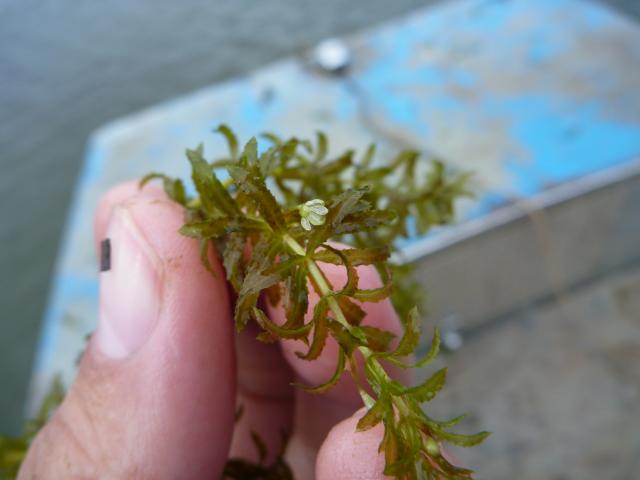
During these cold months I am sure many of you are daydreaming about warm weather and your favorite activities on surrounding lakes. Fishing, swimming, water skiing, and other activities are only a few months away but during our down time, lets talk a little about the importance of aquatic plants to our local water bodies. “Why should we care about aquatic plants?” you might ask. Well below is a brief review of why aquatic plants are important to us as well as the activities that we desire.
Aquatic plants are a natural part of any aquatic environment, just as grasses, shrubs and trees are part of the land. They are also essential the animals that live in or near the water. Their roots provide the foundation that holds sediments in place and keeps the shoreline from washing away. They also aid in the cycling nutrients and vital oxygen through an aquatic system.
Aquatic plants provide habitat for fish all throughout their lives. This includes spawning and nursery areas as well as for feeding and shelter to avoid predators. Waterfowl also use aquatic plants for food, nesting materials and for shelter from the elements and predators.
Although aquatic plants are important to lakes, they must stay in balance to ensure that problems don’t occur. Sometimes aquatic plants become overabundant and cause negative impacts on fish populations, fishing and thus impact the recreational activities that we mentioned earlier. When plants become a problem they can be designated as a “nuisance” and controls might be implemented to help improve environmental and recreational conditions while also ensuring the proper balance for the lake’s natural processes. A management plant should only subtly change plant numbers, but never drastically alter them. The use of aquatic plant controls, if misused, can negatively affect the plants and the animals that depend on them, therefore control measures should only be administered by licensed professionals.
There are a number of aquatic plant species grow in North Carolina lakes. Most of these species are desirable and rarely cause problems with recreational uses. There are however a few, mostly invasive invaders, that can form dense beds that create major recreational and ecological problems. The worst offender in North Carolina is a nasty species accidentally imported from parts of Asia – Hydrilla verticillata. This invader can take over a lake quickly, crowding out native species and creating a number of recreational and ecological problems. There are a few specific methods used to control Hydrilla in North Carolina waters. Over the next few weeks we will talk about Hydrilla, its recreational and environmental impacts as well as discuss some of the management options used in our local lakes.
If you have questions please contact your Aquatic Extension Associate, Brett M. Hartis, at (919)-515-5648 or email at bmhartis@ncsu.edu.


